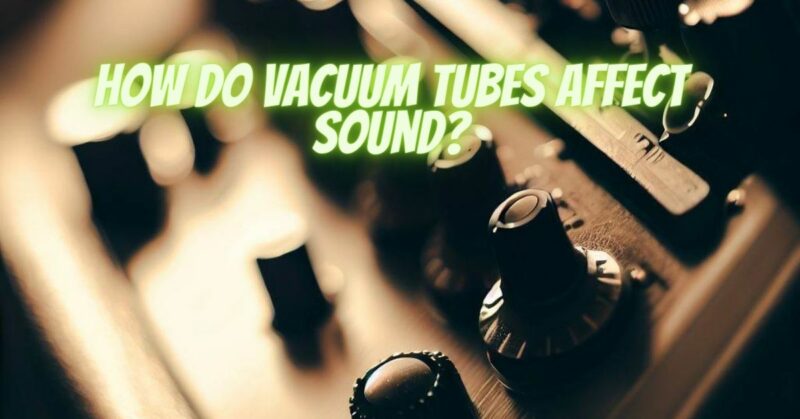In the realm of audio technology, vacuum tubes, also known as electron tubes or valve amplifiers, hold a special place. These archaic-looking components, with their warm orange glow, have enchanted audiophiles and musicians for decades. But what exactly is it about vacuum tubes that makes them so cherished, and how do they impact audio quality? In this article, we will explore the mystical world of vacuum tubes and their profound influence on the sonic landscape.
The Basics of Vacuum Tubes
Before we dive into the impact on audio quality, let’s understand the fundamentals of vacuum tubes:
- Valve Operation: Vacuum tubes are electronic devices that control the flow of electrons between two electrodes (an anode and a cathode) within an evacuated glass envelope. They rely on thermionic emission, where heat causes the cathode to emit electrons, creating an electron flow.
- Amplification: Vacuum tubes are known for their amplification properties. They can take a weak electrical signal and significantly boost its amplitude. This feature is integral to their use in audio amplifiers.
- Harmonic Distortion: One of the defining characteristics of vacuum tubes is the pleasant harmonic distortion they introduce when amplifying audio signals. This distortion adds warmth, richness, and complexity to the sound, often described as “tube saturation.”
Impact on Audio Quality
- Warmth and Character: Vacuum tubes are celebrated for their ability to impart a unique warmth and character to audio. This sonic fingerprint is often associated with vintage recordings and is prized for its ability to make music sound more organic and engaging.
- Even-Order Harmonics: Vacuum tubes produce predominantly even-order harmonics, which are considered sonically pleasing. These harmonics add depth and color to the sound, contributing to a more musical and pleasing listening experience.
- Soft Clipping: When driven into saturation, vacuum tubes exhibit soft clipping behavior. Unlike the harsh clipping of solid-state devices, this gentle saturation results in a more forgiving and natural distortion that many find appealing, especially in musical contexts.
- Dynamic Range: Vacuum tubes have a wide dynamic range, allowing them to handle both subtle nuances and explosive peaks in music gracefully. This capability contributes to a more dynamic and expressive audio quality.
- Midrange Emphasis: Tubes often emphasize the midrange frequencies, making vocals and instruments like guitars and pianos stand out. This midrange focus contributes to the perception of clarity and presence in audio.
- Versatility: While often associated with vintage and classic sounds, vacuum tubes can be used creatively in modern music production. Musicians and producers employ tube-based equipment to shape audio textures and craft signature sounds.
Challenges and Considerations
Despite their allure, vacuum tubes have limitations and considerations:
- Maintenance: Vacuum tubes are fragile and have a finite lifespan. They require occasional replacement, which can be an ongoing expense.
- Heat Generation: Tubes generate significant heat, necessitating adequate ventilation and cooling measures.
- Size and Weight: Tube-based equipment tends to be larger and heavier than their solid-state counterparts.
Vacuum tubes are revered for their unique impact on audio quality, adding warmth, character, and a touch of nostalgia to music and audio. Their ability to introduce harmonic distortion, dynamic range, and midrange emphasis has made them a cherished component in the world of audiophiles and musicians. While they come with certain practical challenges, their enduring popularity is a testament to the enduring magic of their sonic alchemy.


